
Laser & Optoelectronics Progress
metrics 2024
Advancing the Frontiers of Optics and Electronics
Introduction
Laser & Optoelectronics Progress, published by the Shanghai Institute of Optics and Fine Mechanics, Chinese Academy of Sciences, is a pivotal journal dedicated to advancing the fields of optics and electronic engineering. With an ISSN of 1006-4125, this journal provides a comprehensive platform for groundbreaking research focused on lasers, optoelectronic devices, and their practical applications. Although currently categorized in Quartile 4 in both Atomic and Molecular Physics, and Electrical and Electronic Engineering, it serves as an essential resource for disseminating innovative findings and techniques to a global audience. Researchers and scholars will find value in its commitment to fostering collaboration and knowledge-sharing amidst the rapidly evolving landscape of optical sciences. As a key contributor to the academic community, Laser & Optoelectronics Progress aims to bridge gaps between theory and practice, ultimately catalyzing advancements that enhance technological evolution in the field.
Metrics 2024
 0.21
0.21 0.90
0.90 0.60
0.60 18
18Metrics History
Rank 2024
Scopus
IF (Web Of Science)
JCI (Web Of Science)
Quartile History
Similar Journals
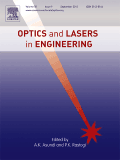
OPTICS AND LASERS IN ENGINEERING
Advancing the Frontiers of Optical EngineeringOPTICS AND LASERS IN ENGINEERING, published by Elsevier Science Ltd, is a premier journal dedicated to advancing the field of optics and laser technology in engineering applications. With a robust ISSN of 0143-8166 and E-ISSN 1873-0302, this journal is positioned within the top quartile (Q1) across several categories, including Atomic and Molecular Physics, Electrical Engineering, and Mechanical Engineering as of 2023, showcasing its prestige and impact in the scientific community. The journal has consistently ranked high in Scopus, notably within the top 10% for Mechanical Engineering and Electronic, Optical, and Magnetic Materials research. Since its inception in 1980, OPTICS AND LASERS IN ENGINEERING has served as a vital platform for disseminating cutting-edge research, fostering innovation and collaboration among researchers, professionals, and academia. Though it does not currently offer Open Access options, its high impact factor and selective publication process ensure that articles reach a wide audience while maintaining rigorous academic standards. Researchers and students alike are encouraged to engage with this influential journal to contribute to and stay abreast of advancements in optical technologies and their engineering applications.

OPTICAL REVIEW
Illuminating the Future of Optical ScienceOPTICAL REVIEW is a distinguished journal published by the Optical Society of Japan that serves as a critical platform for researchers, professionals, and students within the diverse fields of atomic and molecular physics and optics. With its ISSN 1340-6000 and E-ISSN 1349-9432, the journal has had a significant impact on the dissemination of knowledge since its inception in 1994, with a planned coverage until 2024. Although it currently holds a Q4 ranking in the 2023 category quartiles and is positioned at rank #152 out of 224 in the Scopus database, its contributions are vital for advancing optical science. This journal provides a venue for innovative research, review articles, and significant developments that drive the optical sciences forward. Although not categorized as Open Access, it remains an important resource for those seeking to deepen their knowledge and engage with leading-edge research in optics. With its base located at the Kudan-Kita Building in the heart of Tokyo, Germany, OPTICAL REVIEW is poised to continue fostering scholarly communication and collaboration on a global scale.

Chinese Optics
Exploring the Depths of Optical Science and Technology.Chinese Optics is a premier journal dedicated to advancing the field of optics, encompassing research on atomic and molecular physics. Published by the esteemed Changchun Institute of Optics Fine Mechanics & Physics in China, this journal supports the sharing of cutting-edge findings since its inception in 2010. With an ISSN of 2097-1842, it operates within a competitive landscape, currently positioned in Q3 of the category for Atomic and Molecular Physics and Optics, according to the 2023 metrics. While the journal is not open access, it offers a valuable platform for researchers, professionals, and students to explore and contribute to significant discoveries in the realm of optics and light technology. By fostering scholarly communication, Chinese Optics plays a crucial role in bridging theoretical and practical aspects, making it an indispensable resource for those passionate about the optical sciences.

Photonics, an esteemed journal published by MDPI, is a leading platform for researchers in the fields of atomic and molecular physics, optics, and instrumentation. Since its inception in 2014, the journal has fostered open access to cutting-edge research, facilitating knowledge dissemination in these dynamic disciplines. With its Q2 ranking in the 2023 Scopus metrics for various categories, including radiology, nuclear medicine, and imaging, Photonics represents a crucial academic resource for professionals and students seeking to advance their understanding and expertise. Located in Basel, Switzerland, the journal plays a pivotal role in bridging theoretical and practical approaches to photonic technologies. Researchers are encouraged to contribute their findings, thereby enriching the journal’s impact and relevance in the global scientific community through collaboration and innovation.
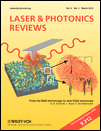
Laser & Photonics Reviews
Unveiling Breakthroughs in Condensed Matter PhysicsLaser & Photonics Reviews is a prestigious academic journal published by WILEY-V C H VERLAG GMBH, based in Germany. Since its inception in 2007, the journal has rapidly established itself as a leading outlet in the fields of Atomic and Molecular Physics, Condensed Matter Physics, and Electronic, Optical, and Magnetic Materials. With its impressive impact factor and presence in the Q1 category across multiple relevant disciplines, it ranks among the top-tier journals in its field—ranked #18 out of 434 in Condensed Matter Physics and #13 out of 224 in Atomic and Molecular Physics according to Scopus rankings. The journal emphasizes high-quality research that contributes significantly to theoretical and applied photonics, bridging gaps between fundamental science and practical applications. Although access is not open, it remains essential reading for researchers, professionals, and students eager to stay abreast of groundbreaking advances and applications in laser technology and photonics. For further information and to explore its compelling articles, please visit its official site.
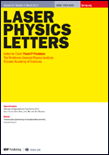
LASER PHYSICS LETTERS
Fostering Excellence in Laser ScienceLASER PHYSICS LETTERS is a prestigious peer-reviewed journal published by IOP Publishing Ltd in the United Kingdom, focusing on the burgeoning field of laser physics and its applications. With an ISSN of 1612-2011 and an E-ISSN of 1612-202X, this journal stands at the intersection of innovative research and practical applications, addressing diverse topics within the realms of Instrumentation and Physics and Astronomy. Recognized for its impactful contributions, it boasts a ranking within the Q3 quartile for both relevant categories as of 2023, reflecting its steady rise and commitment to advancing knowledge in the area. Researchers and practitioners are encouraged to explore its content and contribute to the ongoing discourse that shapes the future of laser technologies. While LASER PHYSICS LETTERS does not currently offer open access options, its rigorous selection criteria ensure that published work is of the highest quality, positioning it as a vital resource for anyone engaged in laser science and engineering.
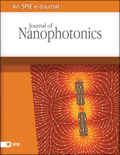
Journal of Nanophotonics
Transforming Ideas into Nanophotonic RealitiesThe Journal of Nanophotonics, published by SPIE-SOC Photo-Optical Instrumentation Engineers, is an esteemed platform dedicated to advancing the field of nanotechnology through pioneering research in photonics. Since its inception in 2007, this journal has become instrumental in disseminating innovative findings and fostering collaborative discussions, especially in the domains of Condensed Matter Physics, Electronic, Optical and Magnetic Materials, and Nanoscience and Nanotechnology. Currently ranked within the Q3 category across these fields, it serves as a vital resource for academics, industry professionals, and students keen on exploring the multifaceted applications and implications of nanophotonic technologies. With its convergence set to continue until 2024, the journal offers a non-open-access model, ensuring rigorous peer-review standards and high-quality publications that contribute to the global body of knowledge.
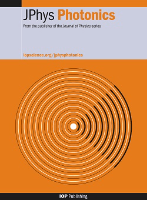
Journal of Physics-Photonics
Shaping Tomorrow's Innovations in Physics and EngineeringJournal of Physics-Photonics, published by IOP Publishing Ltd in the United Kingdom, is an esteemed Open Access journal that has been at the forefront of research in the field of photonics since its inception in 2018. With an impressive portfolio, the journal has achieved Q1 ranking in 2023 across multiple disciplines, including Atomic and Molecular Physics, Electrical and Electronic Engineering, and Electronic, Optical, and Magnetic Materials. This positions it among the leading journals in these areas, reflecting its significant influence and contribution to advancing knowledge and innovation. The journal aims to disseminate high-quality research findings that encompass a wide range of topics in photonics, promoting interdisciplinary approach that fosters collaboration among researchers, professionals, and students. With its commitment to open access, Journal of Physics-Photonics ensures that groundbreaking research is accessible to all, empowering a global audience to engage with and benefit from the latest advancements in photonic technologies.

Frontiers of Optoelectronics
Shaping Tomorrow’s Technologies Through OptoelectronicsFrontiers of Optoelectronics is a prestigious peer-reviewed journal published by HIGHER EDUCATION PRESS, focusing on the rapidly evolving fields of electrical engineering, optical science, and material science. With its inception in 2012 and an impressive impact factor achieved by being ranked Q1 in both Electrical and Electronic Engineering and Electronic, Optical and Magnetic Materials as of 2023, this journal exemplifies excellence in research dissemination. Operating under an Open Access model since 2022, it ensures timely and widespread accessibility to cutting-edge advancements and innovative applications in optoelectronics, making it an essential resource for researchers, professionals, and students alike. The journal is indexed in Scopus, with notable ranking positions—Rank #143/797 in Electrical and Electronic Engineering and Rank #55/284 in Electronic, Optical and Magnetic Materials—highlighting its significant contribution to the academic community. Based in Beijing, China, the journal fosters a global dialogue around key technological trends, ultimately driving further development in the field.

eLight
Connecting Researchers to Transformative Insights in ScienceeLight is a leading academic journal published by SPRINGER NATURE, dedicated to the dynamic field of Atomic and Molecular Physics, as well as Electronic, Optical, and Magnetic Materials. Launched in 2021, the journal has quickly established itself as a reputable source of cutting-edge research, evidenced by its impressive Q1 quartile rankings in both categories for 2023, alongside remarkable Scopus rankings that place it in the top 2% of its fields. With a commitment to advancing knowledge and fostering innovation, eLight invites contributions from researchers, professionals, and students who are passionate about exploring new frontiers in these critical areas of study. Hitting a critical intersection of physics and materials science, the journal provides an open forum for the dissemination of experimental findings, theoretical studies, and application-based research, ensuring accessibility to vital discoveries that drive progress in technology and academia. Located in Singapore, eLight is poised to make significant contributions to the scientific community until at least 2024, and beyond.